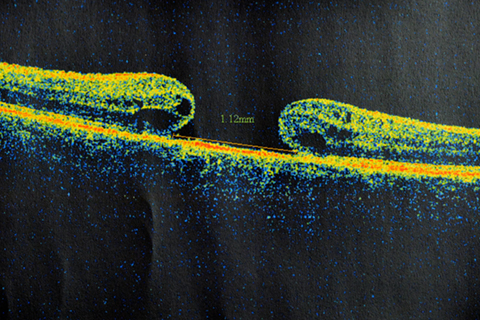Macular Hole
Macular Hole: Understanding and Managing this Vision Threat with Peak Retina
Introduction
Welcome to Peak Retina, your trusted partner in preserving and enhancing your eye health. We understand the significance of clear and healthy vision, and we are committed to providing you with the best care for all your retinal concerns. In this article, we will explore Macular Hole, a condition that can affect your central vision.
What is a Macular Hole?

A Macular Hole is a disorder of the retina, the light-sensitive tissue located at the back of your eye. The macula, a small area at the center of the retina, is responsible for sharp and detailed central vision, which is essential for reading, recognizing faces, and performing tasks that require fine detail.
A Macular Hole occurs when there is a small break or opening in the macula. This disruption can lead to distorted or blurred central vision, making it challenging to see objects clearly and perform daily activities.
Frequently Asked Questions (FAQs)
What causes Macular Holes?
- Macular Holes are typically caused by the aging process. As we age, the vitreous gel inside the eye can shrink and pull away from the surface of the macula. In some cases, this vitreous separation can lead to a Macular Hole. Other less common causes may include eye trauma or diseases.
What are the symptoms of a Macular Hole?
- The most common symptom of a Macular Hole is a gradual or sudden loss of central vision. You may notice blurriness, distortion, or a dark spot at the center of your vision. Straight lines may appear wavy or distorted.
How is a Macular Hole diagnosed?
- A comprehensive eye exam is essential for diagnosing a Macular Hole. Your eye care provider will use special instruments to examine the retina and may perform imaging tests, such as optical coherence tomography (OCT), to get a detailed view of the macula.
Can a Macular Hole heal on its own?
- In some cases, small Macular Holes may spontaneously close without treatment. However, most Macular Holes require medical intervention to improve or restore vision.
What are the treatment options for Macular Holes?
- The primary treatment for Macular Holes is a surgical procedure called vitrectomy. During this surgery, the vitreous gel is removed from the eye, and a gas bubble is injected to help close the hole. Over time, the gas bubble is absorbed, and the hole is replaced with natural eye fluids.
What is the recovery process like after Macular Hole surgery?
- After surgery, patients are usually required to maintain a face-down position for a specified period to facilitate the closure of the hole. Recovery time varies from person to person but can take several weeks to months. Follow-up appointments are crucial to monitor progress.
Can vision be fully restored after Macular Hole surgery?
- The extent of vision improvement after surgery depends on several factors, including the size and stage of the Macular Hole. While some patients may experience a significant improvement in central vision, others may have only partial recovery. Early intervention often leads to better outcomes.
Conclusion
A Macular Hole can be a challenging condition that affects your central vision, but it is treatable, especially when detected early. At Peak Retina, we are dedicated to providing you with the highest quality care and support during your journey to better eye health.
If you experience any symptoms of a Macular Hole or have concerns about your eye health, please don’t hesitate to contact us. Our experienced team of retina specialists is ready to assist you in preserving and enhancing your vision. Your vision is our priority at Peak Retina, and we are here to guide you every step of the way.

